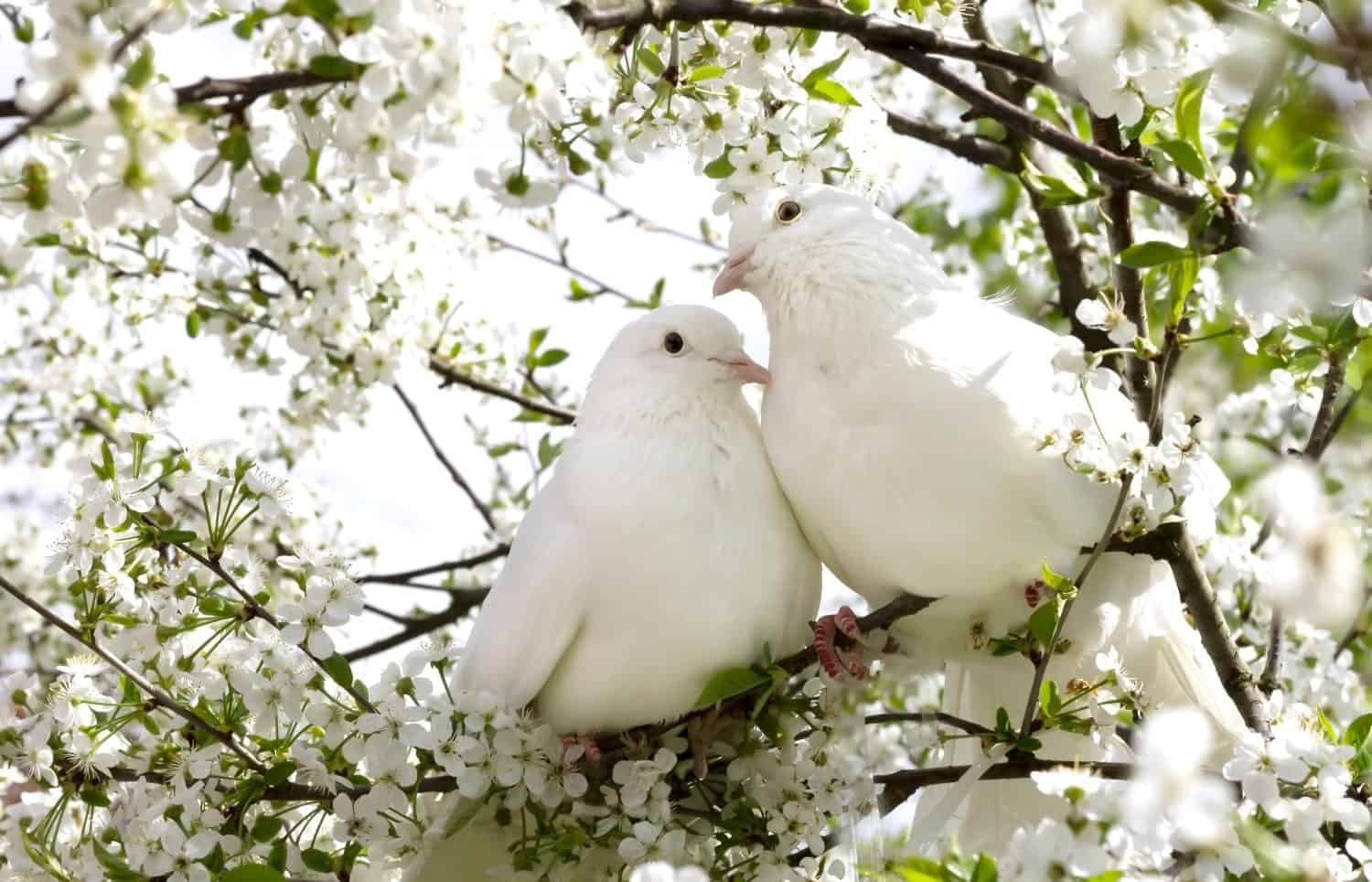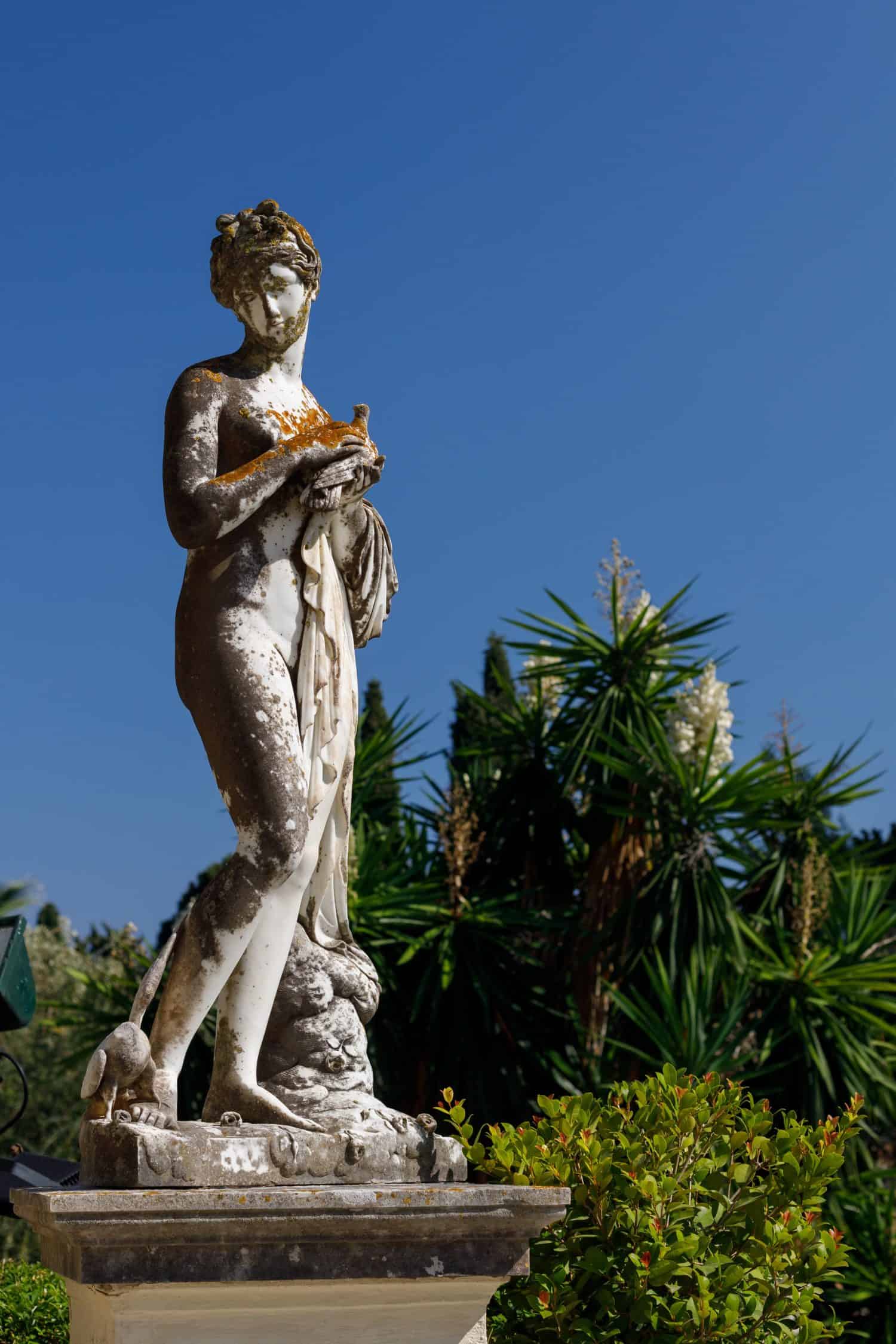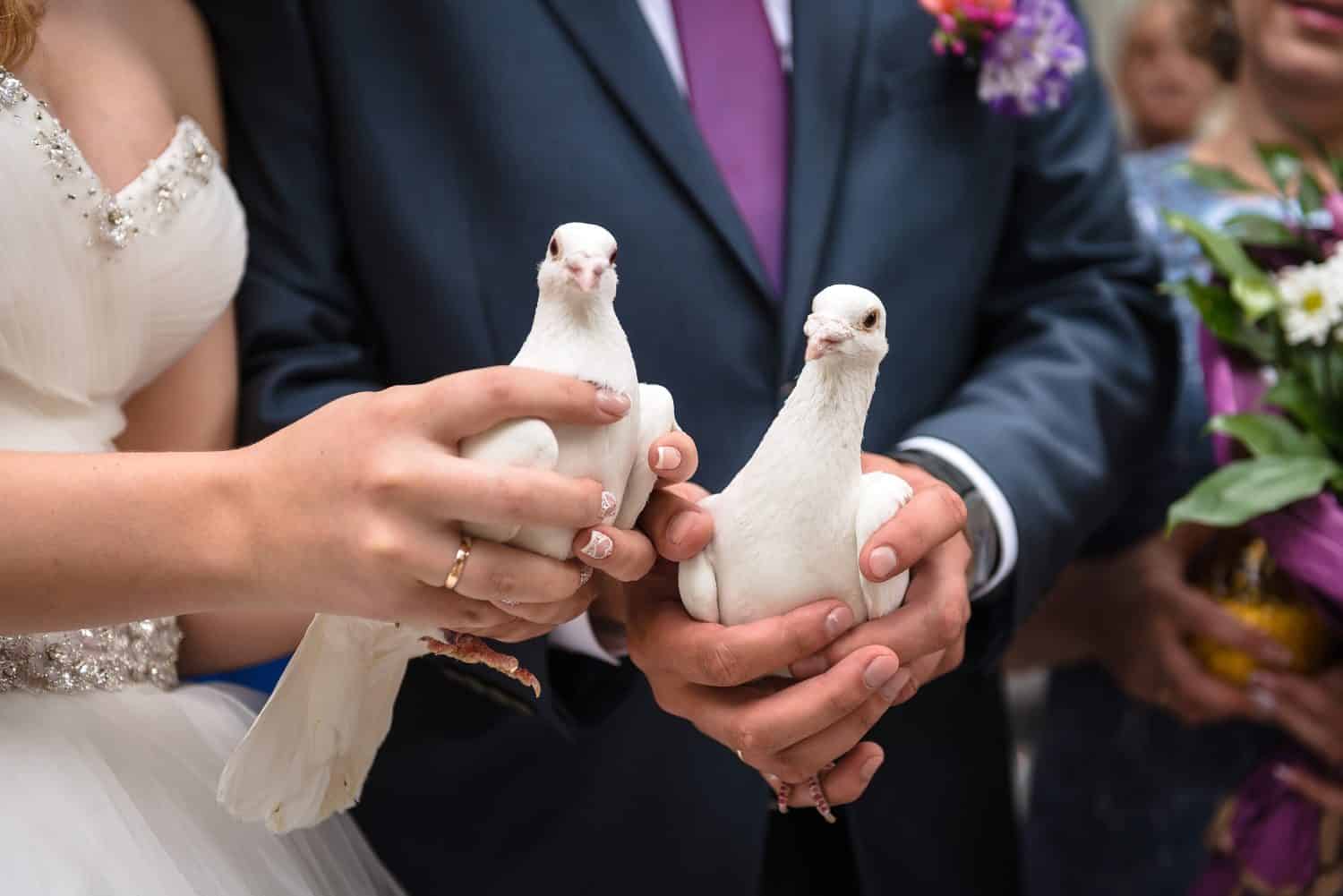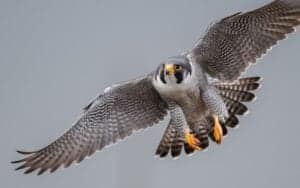To dispel the mystery right away: Some doves mate for life, but not all. Many believe that mourning doves, for example, got their name because they forever mourn their partners after they pass away. This may be part of the reason why it’s popular opinion that doves mate for life and “never move on.” It’s not a necessarily true one, however.
Many doves indeed find new “soulmates” after their original, initial partners pass away. Also, some doves do mate for a lifetime, but others stick to their partners only until the breeding season is over. (FYI, they mainly breed from March through September; so, for many of them, it’s just summer love!)
Additionally, it is estimated that as much as 90% of all bird species are monogamous, making the fact that doves are monogamous, too, while with their partners, pretty unimpressive. However, there are at least 8 reasons why doves are so often associated with love and weddings, much more so than other birds. Here we’ll explore what they are, and why doves are still a great choice for expressing your love.
1. Doves Produce Special Cooing Sounds

Doves can often be caught billing and cooing!
©Bonnie Taylor Barry/Shutterstock.com
Each dove species has its unique cooing sound. Mourning doves, for example, have, according to many, a sorrowful sound that resembles that of an owl. These sounds have little to do with mourning, however. They are mainly produced by males who want to attract a partner. With that in mind, doves’ cooing sounds are the likely origin of the expression “billing and cooing,” showing the birds’ connection with love and relationships.
2. Males Court the Females

Males often show off their flying prowess in front of potential mates.
©ifong/Shutterstock.com
Just like humans, doves court their partners. Male doves in particular have special courtship rituals they perform in front of females in hopes of attracting their attention. Besides the special cooing sounds, these rituals include tail-fanning, bowing, neck-puffing, and exhibiting their flying skills.
3. Doves Typically Have Big Families

These hardworking parents have a lot of mouths to feed.
©liyuhan/Shutterstock.com
Mourning doves in particular can raise up to six broods a year. On average, however, that number is closer to three, and an average dove couple raises two families per year. Incubation takes two weeks, with both parents being involved in the process.
Females typically sit on the eggs to keep them warm in the evening and throughout the night, while males sit on them in the morning and the afternoon. So, not only are doves prolific breeders, but they also share parenting responsibilities more or less equally. As we’ll see below, this is the case not only prior to hatching but also after it. This may be one reason why we now associate doves with partnerships.
4. Dove Couples Share Parenting Responsibilities

Male and female doves are almost equally involved in typical “household chores” and other family responsibilities.
©Marina.Martinez/Shutterstock.com
Males and females work together on more “projects” than just the incubation. For example, both sexes contribute to nest construction. Male doves are in charge of collecting and bringing nest materials; females are doing the actual construction work.
Both parents also do their fair share of post-hatching parenting work. They feed their young “crop milk,” a milky substance that adult doves secrete in their throats. They also jointly work to keep their squibs (i.e., baby doves) warm. Parenting responsibilities don’t last long though, as fledlings leave the nest only two to three weeks after hatching. The parents may still keep feeding them for an extra week or two, but nothing beyond that.
4. Doves Are One of Aphrodite’s Favorite Birds

Doves are also linked to Aphrodite, as well as her Roman counterpart Venus. Here, Aphrodite is gently holding a dove in her hands.
©MAXSHOT.PL/Shutterstock.com
The Greek goddess of love, Aphrodite, may be another culprit for the modern interpretation of doves. According to Greek mythology, Aphrodite viewed doves as sacred and used them as her messengers. Over time, doves eventually evolved to be the symbols of this goddess.
Interestingly, the ancient Greeks didn’t associate Aphrodite with “pure” love — which would become the prevalent meaning of doves in more recent history — but primarily with physical, erotic love. Sexual allure was Aphrodite’s key asset, with her ability to evoke desire often seen as her primary power. Mesopotamians, too, associated doves with a carnal type of love, linking them to their goddess of fertility, Inanna.
5. In Christianity, Doves Symbolize Peace

According to the Bible, Noah released a dove from his ship after the flood to see if there was land again. The dove returned carrying an olive branch in its beak, indicating that the land did indeed re-appear.
©LittlePerfectStock/Shutterstock.com
With Christianity came a new understanding of doves. Their symbolism slowly shifted from physical love to what is often viewed as a “purer,” more innocent kind of love. Primarily, they came to symbolize peace, forgiveness, and love. They are also associated with and often used to depict the Holy Spirit in Christian artwork.
7. Doves Were Used for Love Potions during Medieval Times, Allegedly

In medieval times, doves were used for more than food.
©Maya Kruchankova/Shutterstock.com
Doves were frequently on the menu in the Middle Ages. They were housed in dovecotes, and used for meat, eggs, and feathers. However, some sources suggest that doves were also an important part of many medieval love potion recipes. Many of those specifically required the heart of a dove. This was likely due to the influence of prior religious and pagan interpretations of these birds.
8. The Aztecs Used White Doves in Wedding Ceremonies

Pure white doves are also said to represent new beginnings, hence their prevalent use in wedding ceremonies.
©Greentellect Studio/Shutterstock.com
Using doves in wedding ceremonies is not new; the Aztecs apparently did so long before us. This warrior tribe also associated doves with love or, more specifically, with Xochiquetzal, the goddess of love. The birds were also seen as symbols of motherhood, thanks to their ability to produce food for their young ones themselves. Finally, the Aztecs also believed that doves could freely move between the worlds — the Earth and the sky — while that their singing denoted the time when the veil between the two worlds was the thinnest; early in the morning and late in the evening.
So, Is It All Bogus Then?
Since not all doves mate for life — nor necessarily mourn their partner’s passing for the rest of their life — you may feel like you were being lied to. Was it all just a marketing ploy? Were doves sold to us as symbols of love, only so we’d pay handsome money to have them at weddings? Not entirely.
Though some dove facts may sometimes be slightly “modified” to better fit the (profitable) narrative, doves indeed have much to do with happy marriages. They symbolize partnerships; equality; forgiveness; and, at the same time, both purity of heart and carnal desires. All of these factors, along with many others, of course, can very much contribute to long-lasting love and relationships. So, despite the fact that doves do not necessarily mate for life, we can still view them as reminders of what love is supposed to be about. Well, at least according to the ancient Greeks, Aztecs, and Christians.
Other Interesting Dove Facts
- In scientific nomenclature, there’s no distinction between doves and pigeons. However, despite belonging to the same family of birds, Columbidae, the two are not the same. Doves are smaller than pigeons and have larger, more fanned-out tails.
- Similarly to pigeons, however, doves have no gallbladder.
- Many languages don’t have different words for doves and pigeons. The two terms are translated exactly the same.
- Females can lay one egg at a time, but they usually lay two (simultaneously).
- Doves are extremely adaptable, functioning well in both urban and rural areas. They tend to prefer open woodlands as their habitats, though.
Summary of Do Doves Mate for Life? 8+ Amazing Facts About These Loyal Birds
| Facts | |
|---|---|
| #1 | Doves Produce Special Cooing Sounds |
| #2 | Males Court the Females |
| #3 | Doves Typically Have Big Families |
| #4 | Dove Couples Share Parenting Responsibilities |
| #5 | Doves Are One of Aphrodite’s Favorite Birds |
| #6 | In Christianity, Doves Symbolize Peace |
| #7 | Doves Were Used for Love Potions during Medieval Times, Allegedly |
| #8 | The Aztecs Used White Doves in Wedding Ceremonies |
Thank you for reading! Have some feedback for us? Contact the AZ Animals editorial team.







